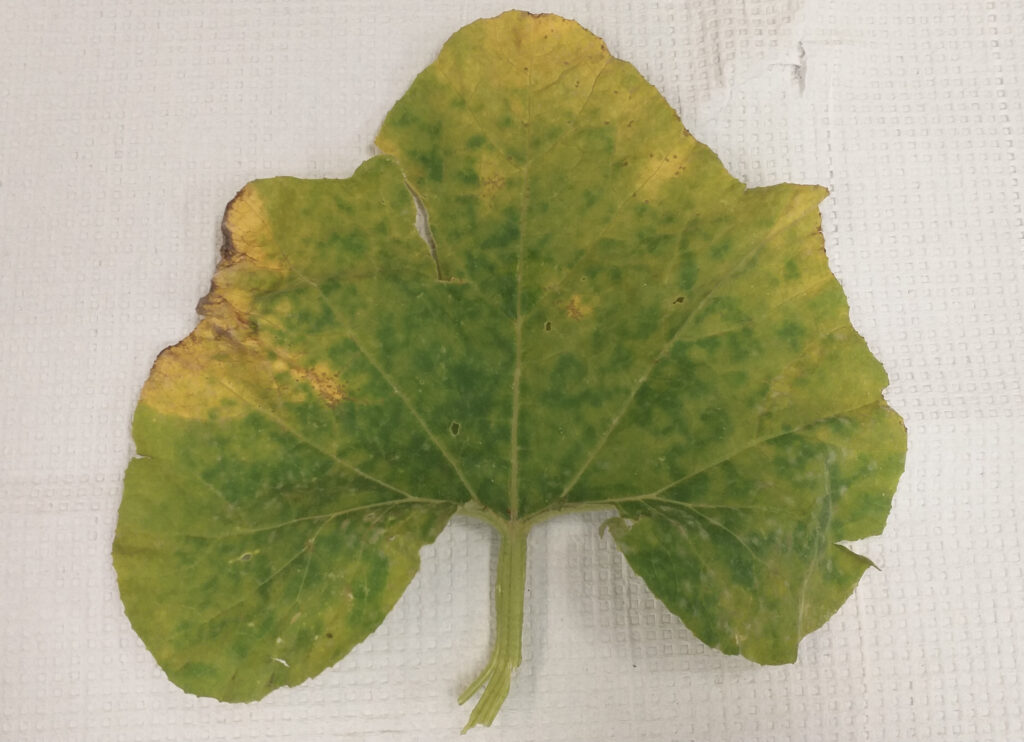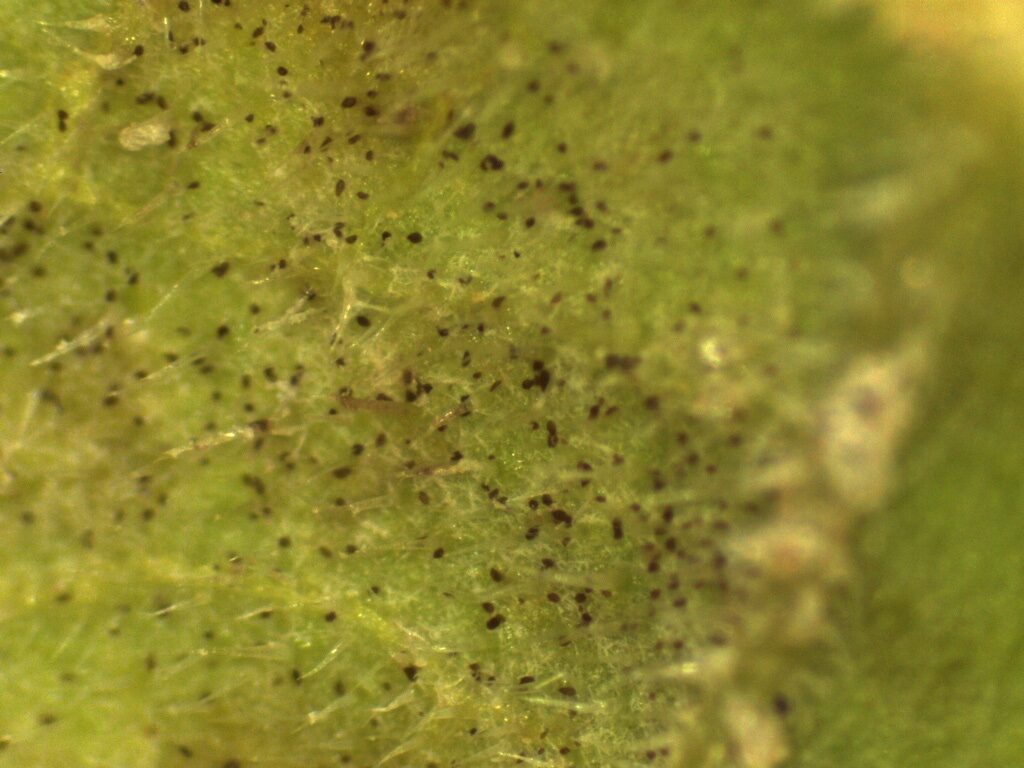Squash Downy Mildew Found in North Carolina
go.ncsu.edu/readext?812151
en Español / em Português
El inglés es el idioma de control de esta página. En la medida en que haya algún conflicto entre la traducción al inglés y la traducción, el inglés prevalece.
Al hacer clic en el enlace de traducción se activa un servicio de traducción gratuito para convertir la página al español. Al igual que con cualquier traducción por Internet, la conversión no es sensible al contexto y puede que no traduzca el texto en su significado original. NC State Extension no garantiza la exactitud del texto traducido. Por favor, tenga en cuenta que algunas aplicaciones y/o servicios pueden no funcionar como se espera cuando se traducen.
Português
Inglês é o idioma de controle desta página. Na medida que haja algum conflito entre o texto original em Inglês e a tradução, o Inglês prevalece.
Ao clicar no link de tradução, um serviço gratuito de tradução será ativado para converter a página para o Português. Como em qualquer tradução pela internet, a conversão não é sensivel ao contexto e pode não ocorrer a tradução para o significado orginal. O serviço de Extensão da Carolina do Norte (NC State Extension) não garante a exatidão do texto traduzido. Por favor, observe que algumas funções ou serviços podem não funcionar como esperado após a tradução.
English
English is the controlling language of this page. To the extent there is any conflict between the English text and the translation, English controls.
Clicking on the translation link activates a free translation service to convert the page to Spanish. As with any Internet translation, the conversion is not context-sensitive and may not translate the text to its original meaning. NC State Extension does not guarantee the accuracy of the translated text. Please note that some applications and/or services may not function as expected when translated.
Collapse ▲Written by Mariana Prieto-Torres, Savithri Purayannur, Mike Adams, and Lina M. Quesada-Ocampo
Pseudoperonospora cubensis, the causal agent of cucurbit downy mildew (CDM), was confirmed on butternut squash in Lenoir County on July 26 of 2021. The sample was part of a sentinel plot maintained by the NC State Vegetable Pathology Lab. The plot showed 10% disease incidence and leaves showed 2% disease severity. Samples were brought to the laboratory for DNA extraction and confirmation that isolates are clade 1 Pseudoperonospora cubensis via clade-specific quantitative PCR assays developed by our lab.
Small chlorotic lesions, circular in shape, were observed on the upper surface of leaves alongside with gray sporulation on the underside, which are typical signs and symptoms of CDM (Figure 1). Sporangiophore structures, which are distinctive of the causal agent (Pseudoperonospora cubensis), were observed on the underside of the leaf using a hand lens (Figure 2).

Figure 1: Circular, yellow lesions on topside of the leaves that are bound by leaf veins (Mariana Prieto, NC State Vegetable Pathology Lab).

Figure 2: Pseudoperonospora cubensis clade 1 sporangia under a dissecting microscope (Dr. Savithri Purayannur, NC State Vegetable Pathology Lab)
The cucurbit downy mildew pathogen has two types of isolates or clades, each of which has a preference for infecting specific cucurbit crops. In the state of North Carolina, clade 2 isolates have a preference to infect cantaloupes and cucumbers, while clade 1 isolates preferentially infect pumpkin, squash, and watermelon. Currently, both clade 1 and clade 2 have arrived in North Carolina through air currents. Therefore, growers of all cucurbits are recommended to take immediate action to protect their crops with effective fungicides in North Carolina.
Pseudoperonospora cubensis has the potential of becoming resistant to fungicides rapidly. Because of this, it is critical to have a strong spray program. This program should ideally alternate effective modes of action along with tank mixes with protective chemistries to decrease the build-up of isolates that are fungicide-resistant. Our annual fungicide efficacy trials in North Carolina revealed differences on fungicide effectiveness between the two different clades, thus, please refer to our cucurbit downy mildew fact sheet for effective chemistries to be used, according to your cucurbit crop.
If you think you may have downy mildew in your crops, please contact your local Extension Agent, and send physical samples and/or photos to the Plant Disease and Insect Clinic. Upon validation, please make a completely anonymous report to the Cucurbit downy mildew IPM website. Management of CDM remains a shared effort within the community, since it is an airborne pathogen that can travel from state to state through air currents. We encourage growers and also homeowners, to actively scout cucurbit leaves for downy mildew throughout the season.
Register with the CDM IPM PIPE to receive texts, emails and/or phone alerts when new disease outbreaks are reported near you.


